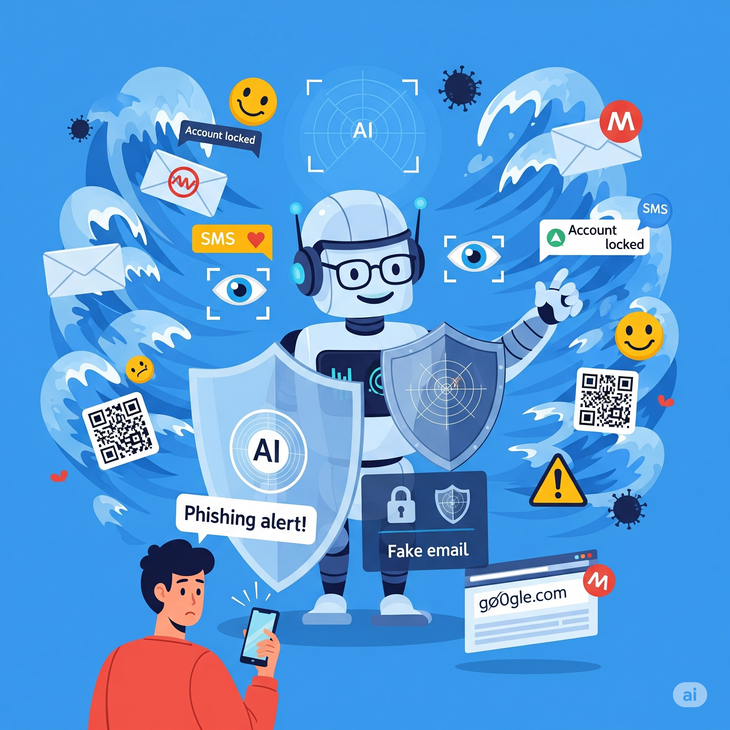
AI helps users detect and prevent online fraud
Anyone can be a victim
Phishing, also known as online fraud, is the act of a scammer impersonating a reputable organization such as a bank, government agency or e-commerce platform to lure users into clicking on fake links, thereby stealing information and assets.
Phishing can happen at any time, especially during holidays, sales season, and sensitive times when users are less vigilant.
Phishing appears on many channels: email, SMS messages, social networking sites, banking apps, fake websites and even fake calls.
Anyone who uses the internet can become a victim: students, the elderly, office workers, online shop owners… No one is immune if they lack knowledge and vigilance.
One wrong click can cause users to lose money, lose their bank account, have their identity stolen, have their personal information leaked, or have their social media accounts hijacked.
What has AI done to avoid Phishing?
Analyze email and message content: When you receive a suspicious email, AI automatically analyzes the content to detect unusual signs such as word usage, incorrect layout or spelling mistakes, and especially links.
If it detects a link leading to a strange address or an unusual structure, the AI will flag a warning or push the email to the spam folder.
Check and warn about dangerous links: When users access a website via text message, AI will check if the address is correct and similar to the real page of the bank or e-wallet.
If it is a fake site, the AI will display a warning "Site may be unsafe" and prevent access.
Monitor unusual behavior on financial apps: AI tracks user behavior like login time, frequently used devices, transaction habits.
If it detects a midnight login from an unfamiliar device and a large transfer, the AI can suspend the transaction and require verification to protect the account.
Protecting users on social networks: AI is integrated into Facebook, Instagram, TikTok... to detect accounts sending mass messages containing malicious links and fraudulent content. The system will automatically lock the account or warn the recipient, preventing the spread in time.
Continuously learn from real data: Every day, thousands of fake emails and websites are fed into the AI training database. As a result, the AI becomes more sensitive and adaptable to new scams that appear, including ones that have never been seen before.
Supporting users in making safe decisions: AI not only detects but also proactively guides users on what to do, such as not opening links, changing passwords, checking accounts, or visiting official sites for verification.
AI can scan millions of data per second, identify suspicious signs and warn in time. But no matter how smart it is, AI still cannot make the final decision for you. Like a suit of armor, AI only really works when you actively wear it. So be careful with every click, and let AI be your companion to protect you in the digital space.
Source: https://tuoitre.vn/ai-giup-ban-tranh-bay-phishing-lua-dao-truc-tuyen-nhu-the-nao-20250602171901713.htm






























































































Comment (0)